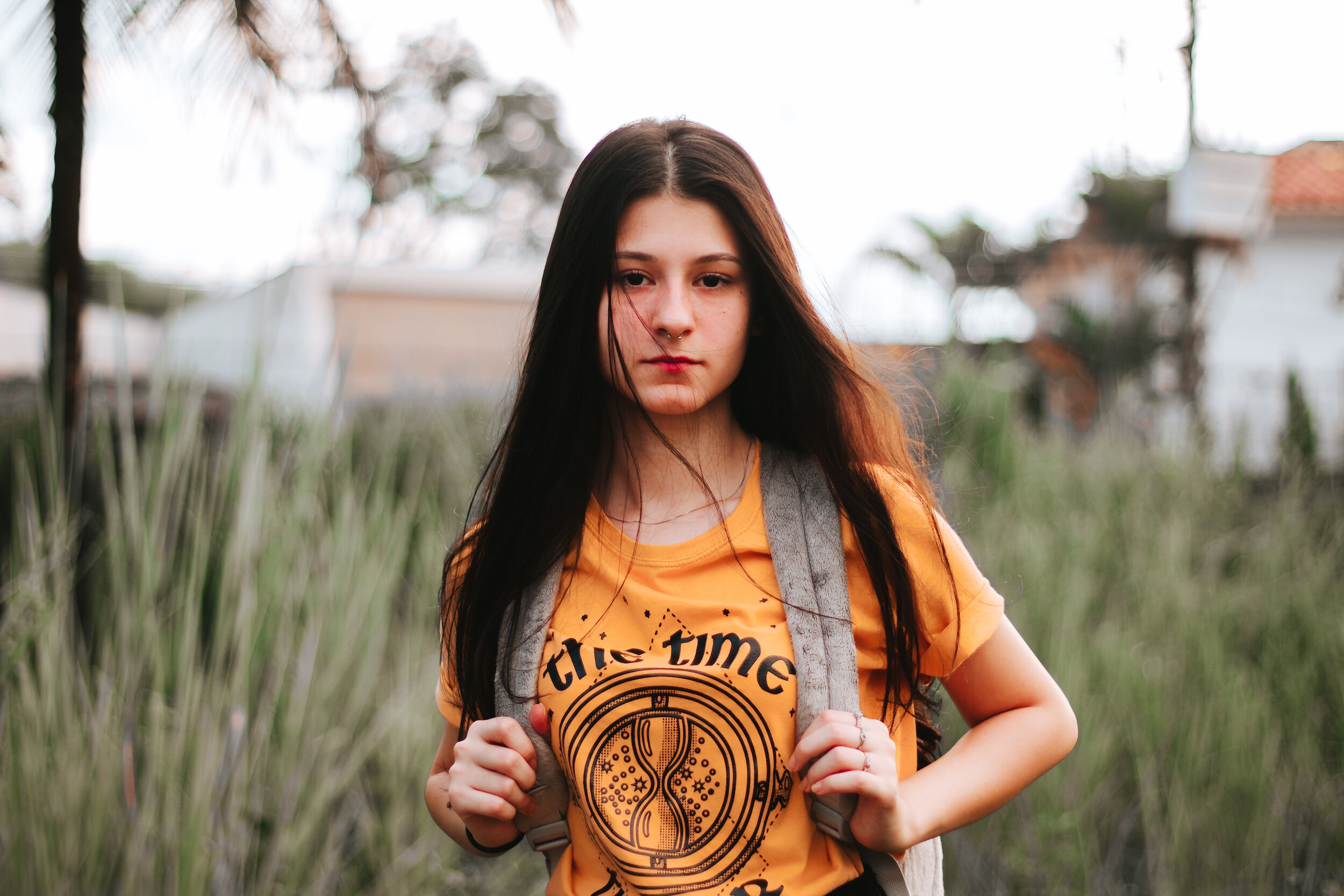This is the second post in a series about trauma symptoms. For information on PTSD in children, click here.
Trauma doesn’t discriminate based on age, race, or gender. Most teens—as many as two thirds—will experience at least one traumatic event before the age of 17. While not all of these young people will suffer long-term effects from their trauma, some research suggests teens may be more vulnerable to developing PTSD than adults. Teenagers don’t always show their trauma symptoms in the same ways that adults do, and they may need special therapy techniques that are meant just for them. In this post, I’ll be sharing how trauma commonly affects teens, signs and symptoms to look out for, and how to get help.
What Causes PTSD in Teens?
Any time a teenager is at risk of serious harm, or witnesses a loved one being put at risk, they are likely to experience a traumatic event. Trauma experiences are so intense that they overwhelm our brain and body’s ability to cope in the moment. Some trauma experiences are common for people across all ages, such as:
Natural disasters, such as hurricanes, fires, and earthquakes
Serious accidents, such as car accidents
Medical emergencies
Violence and crime
Other trauma experiences, however, more frequently affect teenagers than other age groups. These include:
Abuse or neglect from a parent or caregiver
Sexual assault
Witnessing domestic violence against a parent
School or community violence
Some traumatic events are more likely to lead to PTSD than others. Interpersonal trauma—trauma that was inflicted on one person by another—is more likely to cause lingering symptoms. Trauma also has a cumulative effect, and the more traumatic experiences a teen has survived, the more likely they may be to develop PTSD.
Can a Teenager Develop PTSD?
Yes, people of any age can and do develop PTSD. There is even some evidence that teenagers are more likely than adults to develop PTSD following a trauma. Research from the National Institute of Mental Health has shown that about 5% of American teenagers have PTSD, and about 1.5% of those teens are severely affected and impaired by their trauma symptoms. This is higher than the 3.5% of American adults who are diagnosed with PTSD each year.
It is important to know that teen girls are more at risk of PTSD than teen boys, with up to 8% of girls being affected. To me, this seems like an incredibly high number! Amazingly, though, many more young people undergo trauma every year but do not go on to struggle with long-term PTSD symptoms. Nearly half of all U.S. teens will have experienced at least one traumatic event by the time they reach 18.
What are the Symptoms of PTSD in Teens?
PTSD symptoms fall into 4 major categories that are the same for people of all ages:
Intrusion symptoms are unwanted thoughts or feelings that come up unexpectedly, such as flashbacks, recurrent nightmares, and dissociating, which happens when a person detaches from their surroundings due to overwhelming emotions.
Avoidance of people, places, and things that remind a person of the trauma, or not wanting to talk or even think about what happened.
Negative changes in the way a persons thinks and feels, such as feeling depressed, hopeless, or ashamed.
Arousal symptoms, which amp up a person’s fight-or-flight response and leads to increased anxiety and anger.
Common Signs of Teen Trauma to Look For
Some signs of trauma may be more common among teenagers than others. Here are a few signs specific to teenagers that parents can look out for following a trauma if they’re worried about PTSD:
Feeling numb: I hear this one so often from teenagers with PTSD. Teens often tell me that the absence of any emotions is harder for them to deal with than anxiety or depression (although many teens feel these, as well). Teens may also have a hard time feeling connected or close to other people after a trauma.
Low self-esteem: The persistent low mood and negative outlook on life that comes with PTSD can lead to teenagers feeling bad, worthless, or guilty. Perhaps because teens are vulnerable to low self-esteem anyway, this symptom seems to be common amongst adolescents.
Extreme irritability: All teens get angry and mouth off to their parents, but teens with PTSD may have outbursts that are on a whole other level. This is because PTSD causes hyperarousal, meaning a teen’s nervous system is very sensitive and quickly shifts into fight-or-flight mode, which can prompt intense anxiety or anger as well as aggression.
Dropping grades: People with PTSD have a hard time focusing, absorbing information, and remembering things. It’s hard to learn when you’re constantly on edge. This can result in a sudden, unexplained drop in grades for teenagers following a trauma, and school difficulties that might resemble ADHD.
Drug and alcohol abuse: Many people turn to drugs and alcohol to cope with the overwhelming symptoms of trauma, and this may be especially true for teens. A study of teens with substance use disorder found that 70% had previously experienced a trauma. Using drugs and alcohol might also make teens more vulnerable to trauma in the first place, since they may be more prone to taking risks while under the influence.
Suicidal thoughts: Teenagers with PTSD have higher rates of suicide than other young people. The prolonged depression, low self-esteem, and hopelessness of PTSD, paired with increased impulsive behavior, puts teenagers at risk. Many teenagers with PTSD describe having suicidal thoughts or impulses to hurt themselves. While not all of these teens will go on to actually attempt suicide, any thoughts or suicidal behaviors should be taken extremely seriously.
How Can I Help a Teen with PTSD?
Teens with PTSD may feel very hopeless about ever recovering, but PTSD is not a life sentence. People can and do recover from trauma, and our understanding of how to help people with trauma gets better all the time. Today, several therapies exist specifically to help teenagers who are struggling with PTSD.
TF-CBT is a form of cognitive-behavioral therapy that was designed for people with PTSD ages 3-18. It helps teenagers to understand their symptoms, learn ways to cope with strong feelings, and feel more comfortable telling their own story without being bothered by flashbacks or memories.
DBT helps teenagers who are dealing with rapidly shifting moods, urges to self-harm, difficulty with family and friends, and risky or impulsive behavior like drug use or disordered eating. Many people who struggle with these kinds of symptoms are trauma survivors. DBT can help teens learn coping skills, keep themselves safe from self-harm, and learn to tolerate strong negative emotions without losing control or becoming overwhelmed.
I work with preteens and young teenagers with trauma using TF-CBT. If you’re located in North Carolina, New York, or Florida, and you’re looking for counseling, please don’t hesitate to contact me.





